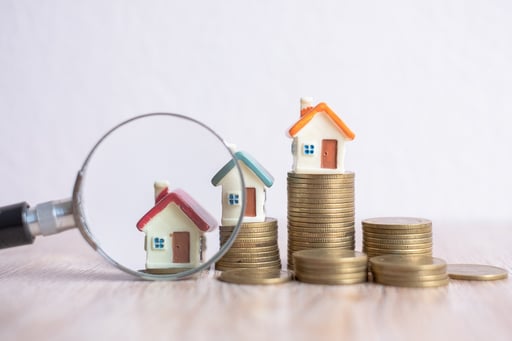In today’s competitive real estate landscape, it’s becoming more and more difficult to find good investment opportunities. Low inventory combined with higher interest rates means that quality properties go fast, and often for much higher than their listed price. This does present a unique opportunity to investors however, and that comes in the form of home flipping. By taking neglected properties and transforming them into desirable homes, investors can turn a profit while also delivering much needed homes to these underserved markets. So how does someone find these lucrative home flipping opportunities? Continue reading to find out.

Understanding the Market
Like with any investment, the first step to a profitable fix & flip deal is doing your research. This typically means taking a look at the stats on different markets, and comparing them to get a better understanding of housing demand in an area. Not every market is created equal, and some may be significantly more successful for flipping. There are a few key indicators you will want to look at including population growth, the health of the job market, and the direction home prices are trending. You will also want to take a look at the surrounding area of any properties you come across. If there are significant developments happening nearby, this can tell you it’s a growing area that’d be perfect for an investment.
Identifying Profitable Homes
You will also need to take some extra steps to find a property with a good potential for appreciation. The best homes to flip will be smaller or neglected properties located in desirable neighborhoods. You will know an area is in high demand if property values are generally higher there, and if it has access to good schools or amenities like shopping, restaurants, and transportation. If you are struggling to find opportunities on the market, consider looking for deals off-market at home auctions and foreclosure sales. You will also want to work closely with your real estate agent to connect you with motivated sellers before they ever list their properties.
Conducting Due Diligence
Once you have found a home that would make for a good flip, you’ll need to do some due diligence to determine if it will be profitable. It’s important to hire a property inspector before making any purchases, as they’ll be able to identify the homes that you’re off avoiding. There may be hidden issues such as foundational or flood damage that are easy to miss, but very costly to repair, which ruin the profitability of a home flip. This step is also where you will determine accurate estimates for renovation costs and resale value. Use the 70% rule to ensure that your deal is profitable; it states that for flipping, you should not pay more than 70% of a homes after-repair value (ARV), minus expenses.
Networking and Building Relationships
We already mentioned how important your real estate agent is in helping you find investment opportunities, but your personal network can also be a great source of help. You may be able to tap into your connections to find sellers, or maybe you can get in touch with a seller through a mutual friend. Don’t neglect the resources that your investment partners have either. For example, your lender may be able to connect you with contractors or other industry professionals to help make your investment project easier.
Leveraging Technology and Data
In the modern world, utilizing data services allows investors to make better informed decisions, boosting their overall returns. There are data aggregators that can provide you with up to date statistics on different markets, allowing you to identify potential opportunities when researching properties. Besides basic market data, these services provides resources that allow you to easily compare the potential return of different properties. We recommend services like ATTOM Data and REiDEAL MASTER.
Additionally, technology may be able to help facilitate other processes like managing project finances, planning renovations, or virtually staging the home when it comes time to sell. Making use of these tools is a great way to save time with your project and maximize your return on investment.
Risks and Challenges
It will be very beneficial to understand the risks associated with a fix & flip investment, that way you can understand how to avoid them and still have a successful project. For starters, be sure to get a proper home inspection, and get all proper work permits and paperwork filled out before starting any work. During renovations, you run the risk of cost overrun and also delays which will make the project take longer, incurring more in holding costs. The solution is to have a detailed plan for the property, along with an accurate budget for each renovation you perform. Then, you will have to stay involved in the project by checking in regularly with your developer to ensure that quality work is delivered and work around any delays.
RCN Capital
The easiest way to save on your next investment is to obtain financing from a real estate lender that can get you the best leverages and rates. RCN Capital lends to real estate professionals, commercial contractors, developers & small business owners across the nation. We provide short-term fix & flip financing, long-term rental financing, and new construction financing for real estate investors. If you are looking to finance a home flip, RCN Capital has competitive loan options available.
.png?width=234&height=80&name=logo-white-1%20(2).png)
